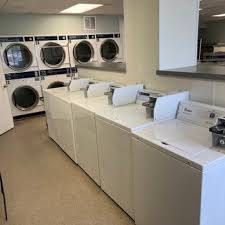If you’ve ever tried managing laundry operations for a hospitality venue, you’ll know—things get chaotic, fast. Towels stack up, linen orders fluctuate, and housekeeping teams are often left juggling priorities while trying to keep guests happy. Whether you’re running a boutique hotel or a backpackers’ hostel, Laundry Room Management is no longer just a back-of-house issue—it’s a frontline service touchpoint that can shape the guest experience.
In this guide, we’ll explore how modern laundry route operators are redefining the efficiency of laundry services in Australia’s accommodation sector. From cost-saving strategies to real-world systems that work, here’s how you can bring control and clarity to your operations.
Why Laundry Room Management Matters for Guest Satisfaction
For guests, clean sheets and fresh towels are non-negotiable. But behind every crisp doona cover is a logistics puzzle. Hospitality venues rely on consistent linen turnover, and when the laundry room is mismanaged, things spiral quickly:
- Delays in towel restocks
- Over-ordering or under-supplying linens
- Staff overtime due to inefficient processing
- Negative online reviews
In many operations, the laundry room is still treated as an afterthought—managed manually or left to chance. But shifting to a structured approach can boost productivity and reduce operational overhead.
The Rise of Route-Based Laundry Services
One of the most efficient ways to improve Laundry Room Management is through route operators. These professionals pick up, process, and return laundry on a regular schedule—eliminating bottlenecks and smoothing out workloads.
What makes route operators effective? Three things:
- Consistency – They run on reliable collection and delivery cycles.
- Volume Handling – Large capacity allows small venues to tap into industrial-scale efficiency.
- Data-Driven Tracking – Many operators now offer tech integrations so you can track usage patterns and plan better linen allocations.
This structure allows venue managers to focus on service, not laundry logistics.
Real-World Example: How One Sydney Hostel Cut Costs by 18%
A busy 80-bed hostel in inner-city Sydney was spending hours each week sorting, folding, and managing linen rotations. The in-house team struggled with peak-season loads, often outsourcing emergency loads at inflated prices.
After switching to a route-based Laundry Room Management model, the results were immediate:
- Costs dropped by 18% in the first quarter
- Time saved: Housekeeping staff gained an average of 6 hours per week
- Linen quality improved, with consistent wash standards maintained
By outsourcing to a dedicated route operator, the hostel removed the need for on-site washing and avoided large capital investments in equipment upgrades.
How to Set Up a Successful Laundry Route Schedule
If you’re considering this model for your venue, here’s a practical setup plan:
1. Audit Your Needs
Track how much linen you use per guest per night, and identify pinch points during check-in/check-out peaks.
2. Choose the Right Route Partner
Look for operators who specialise in Laundry Room Management, offer app-based ordering, and can commit to flexible turnarounds.
3. Plan for Buffer Stock
Keep 1.5x your daily linen requirement on hand to avoid last-minute gaps when laundry is in transit.
4. Train Your Housekeeping Team
Ensure the team understands the pickup/drop-off cycle and how to report shortages or damaged items.
5. Review and Optimise Monthly
Use collected data to tweak your schedule, adjust order volumes, and improve efficiency.
The Environmental Impact of Smarter Laundry Logistics
Beyond cost savings and convenience, streamlined laundry operations can reduce environmental strain. Centralised route services often use water- and energy-efficient equipment that outperforms smaller, on-prem systems.
According to Planet Ark’s Business Recycling Guide, switching to high-efficiency commercial laundry solutions can cut water use by up to 40% per load. It’s a win for the environment and your bottom line.
Laundry Room Management in Multi-Property Setups
For operators managing multiple venues—like a small hotel chain or group of serviced apartments—Laundry Room Management becomes even more critical. Coordinating linen movements across locations requires a central system.
Route operators with digital dashboards and shared inventory systems can streamline logistics across sites. One Melbourne-based hotel group reduced linen loss by tagging each item and linking it to room numbers—cutting replacement costs by 22% annually.
Final Thoughts: Clean Laundry, Clean Ops
Clean laundry may not earn five-star reviews, but dirty laundry definitely earns one-star ones. In the age of instant feedback, poor linen presentation or delays in room turnovers can cost you dearly. That’s why smart Laundry Room Management should be seen as a strategic advantage, not just a housekeeping function.
Whether you’re running a hotel in Hobart or a surf lodge on the Gold Coast, shifting to a route-based laundry model helps your team focus on what matters—delivering a seamless guest experience.

